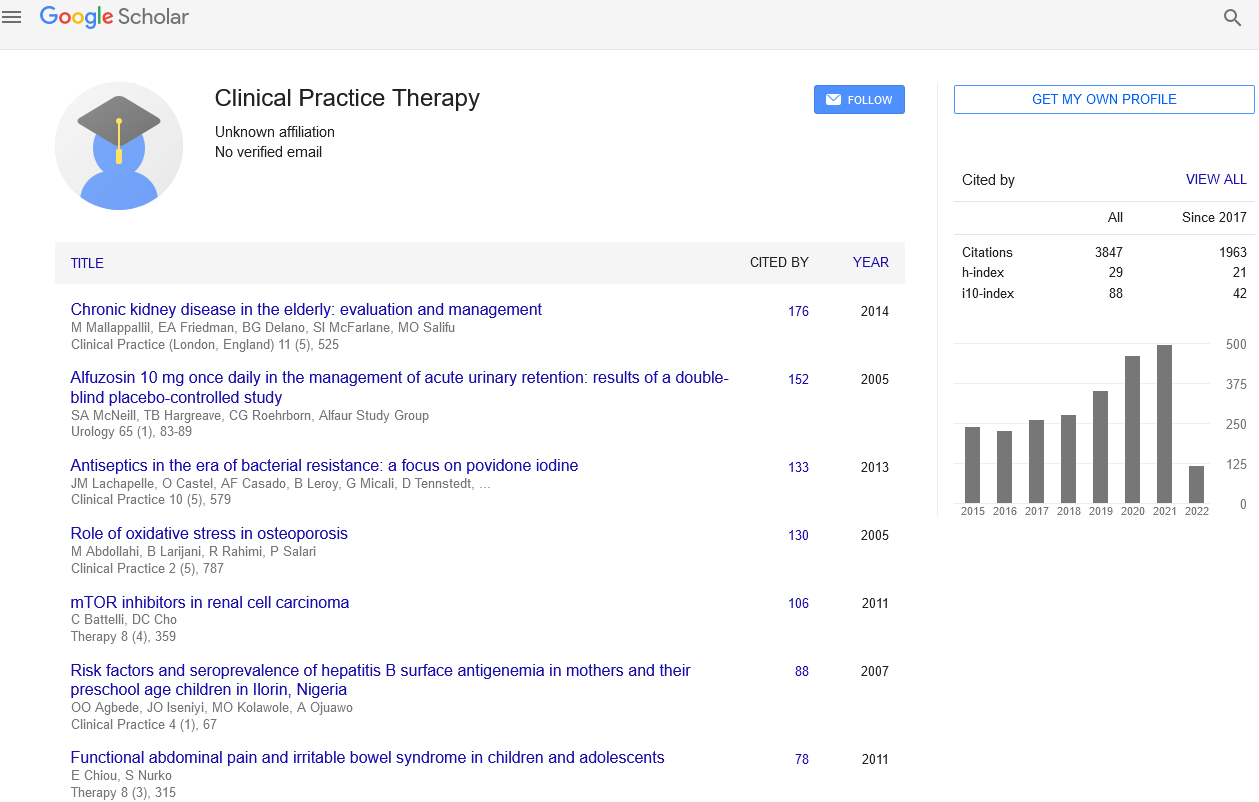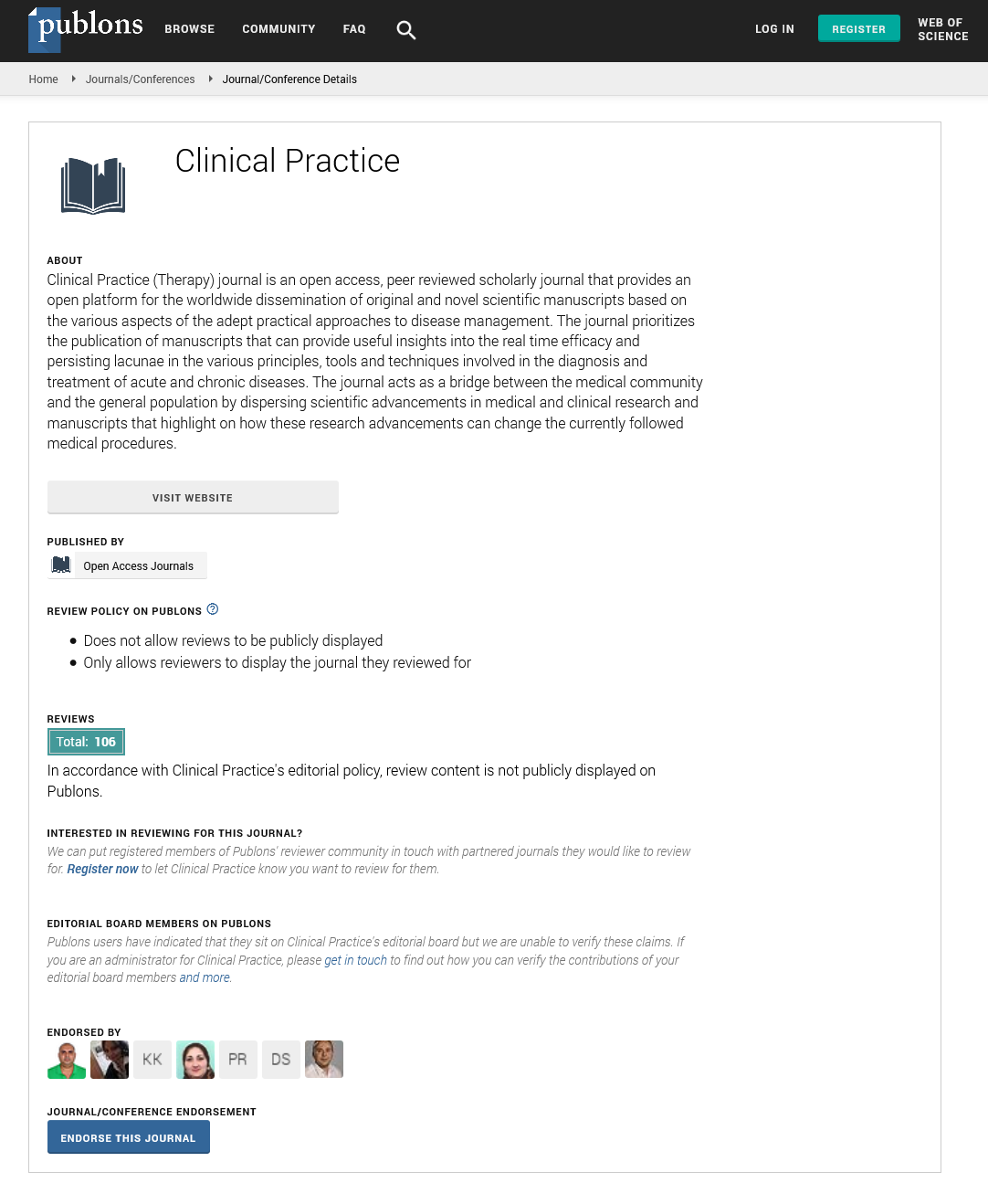Opinion Article - Clinical Practice (2025) Volume 22, Issue 1
A Large-Scale Population-Based Cohort Study Examining the Long-Term Survival Result of Sporadic Bilateral Renal Cell Carcinoma and Optimizing Surgical Treatment
Ruiyi Deng*
National Urological Cancer Center, No.8 Xishiku Street, Xicheng District, Beijing, 100034, China
- *Corresponding Author:
- Ruiyi Deng
National Urological Cancer Center, No.8 Xishiku Street, Xicheng District, Beijing, 100034, China
E-mail: ruiyi@gmail.com
Received: 01-Mar-2025, Manuscript No. fmcp- 25-159065; Editor assigned: 03-Mar-2025, Pre-QC No. fmcp-25-159065 (PQ); Reviewed: 17-Mar-2025, QC No. fmcp-25-159065; Revised: 21-Mar-2025, Manuscript No. fmcp- 25-159065 (R); Published: 28-Mar-2025, DOI: 10.37532/2044-9038.2025.22(1).1-3
Abstract
Sporadic bilateral renal cell carcinoma (RCC) is a rare and complex clinical condition that poses significant challenges for diagnosis, treatment, and long-term survival outcomes. This article presents a large-scale population-based cohort study aimed at examining the long-term survival results of sporadic bilateral RCC and optimizing surgical management strategies. We explore factors influencing survival, the role of nephron-sparing surgery, the impact of early detection, and advancements in surgical techniques. This research is crucial in guiding clinical decision-making and improving patient outcomes for individuals diagnosed with bilateral RCC.
Keywords
Sporadic bilateral renal cell carcinoma • Long-term survival • Nephron-sparing surgery • Surgical treatment • Cohort study • Renal cancer
Introduction
Renal cell carcinoma (RCC) is the most common form of kidney cancer, and its incidence has been increasing globally. While unilateral RCC is relatively common, sporadic bilateral RCC is rare, accounting for a small percentage of renal cancer cases. Due to its complexity, bilateral RCC presents unique challenges in terms of diagnosis, treatment, and long-term survival outcomes. Nephron-sparing surgery (NSS) has emerged as a promising surgical approach, but its role in optimizing survival outcomes remains an area of active research. This perspective article presents insights derived from a large-scale cohort study and explores the potential for improving long-term survival through optimized surgical strategies [1, 2].
Factors influencing long-term survival in bilateral RCC
Several factors affect the survival outcomes of patients with sporadic bilateral RCC, including tumor stage, genetic predisposition, comorbidities, and the extent of renal function preservation. Patients with early-stage bilateral RCC, when treated appropriately, often experience favorable survival rates. However, the overall prognosis is influenced by the need for bilateral nephrectomy, which can result in the loss of renal function and the need for dialysis [3].
Tumor characteristics:
The size, location, and histopathological features of the tumors are key determinants in predicting survival outcomes. Early detection of smaller tumors in bilateral RCC cases can facilitate more effective surgical intervention, leading to improved survival rates.
Surgical Intervention:
Nephron-sparing surgery (NSS), when feasible, has shown to provide better long-term survival rates compared to radical nephrectomy. NSS preserves kidney function and reduces the risk of dialysis dependence, which is critical for long-term quality of life. Furthermore, advances in minimally invasive surgical techniques, such as laparoscopic and robotic-assisted surgeries, have improved the safety and efficacy of these procedures in bilateral RCC cases [4, 5].
Genetic and molecular factors:
Although sporadic bilateral RCC lacks the familial component of conditions like von Hippel-Lindau syndrome, genetic mutations and molecular markers may still influence survival. Understanding the genetic profile of tumors can inform personalized treatment strategies, allowing for more tailored interventions and optimized outcomes.
Comorbidities:
The presence of other health conditions such as hypertension, diabetes, or cardiovascular disease can negatively impact survival. Multidisciplinary management, addressing both cancer and comorbidities, is essential for improving outcomes [4].
Optimizing surgical treatment for bilateral RCC
The goal of surgery in bilateral RCC is to balance tumor control with the preservation of renal function. Nephron-sparing surgery (NSS) is increasingly being advocated for bilateral tumors, especially when both kidneys are involved. This surgical approach has shown to reduce the need for dialysis and improve overall survival. The adoption of minimally invasive techniques, such as laparoscopic or robotic-assisted surgery, further enhances the safety and effectiveness of NSS.
Criteria for nephron-sparing surgery:
NSS is typically recommended when tumors are localized and confined to one part of the kidney. In cases where bilateral tumors are present, careful selection of patients who can benefit from NSS is critical. This includes assessing tumor size, location, and involvement of adjacent structures [6, 7, 8].
Management of advanced stages:
For more advanced stages of bilateral RCC, radical nephrectomy (RN) may be required. However, RN is associated with a higher risk of kidney dysfunction and poor long-term outcomes, which highlights the importance of early detection and intervention.
Minimally invasive techniques:
The development of laparoscopic and robotic-assisted surgical methods has revolutionized the treatment of bilateral RCC. These minimally invasive approaches offer reduced recovery times, fewer complications, and better functional outcomes.
Future directions and research needs
While advances in surgical techniques and the understanding of RCC biology have significantly improved patient outcomes, further research is necessary to refine treatment strategies. Large-scale studies and clinical trials focusing on the genetic and molecular aspects of bilateral RCC could provide insights into more targeted therapies. Additionally, continued investigation into the long-term outcomes of nephron-sparing surgery and the role of adjuvant therapies in managing advanced bilateral RCC is needed [9, 10].
Conclusion
Sporadic bilateral renal cell carcinoma remains a challenging clinical condition, but with ongoing advancements in surgical techniques and early detection strategies, survival outcomes are improving. Nephron-sparing surgery, along with minimally invasive techniques, represents the optimal treatment approach for preserving renal function while managing tumors effectively. Through large-scale cohort studies and further research into genetic and molecular factors, personalized treatment plans will become more refined, offering better prognoses for patients with bilateral RCC.
References
- Jafari F, Hamidian M, Rezadehbashi M, Doyle M, Salmanzadeh-Ahrabi S, et al. (2009) Prevalence and antimicrobial resistance of diarrheagenic Escherichia coli and Shigella species associated with acute diarrhea in Tehran, Iran. Can J Infect Dis Med Microbiol 20: 56â62.
- Ranjbar R, Behnood V, Memariani H, Najafi A, Moghbeli M, et al. (2016) Molecular characterisation of quinolone-resistant Shigella strains isolated in Tehran, Iran. J Glob Antimicrob Resist 5: 26â30.
- Zamanlou S, Ahangarzadeh Rezaee M, Aghazadeh M, Ghotaslou R, et al. (2018) Characterization of integrons, extended-spectrum β-lactamases, AmpC cephalosporinase, quinolone resistance, and molecular typing of Shigella spp. Infect Dis 50: 616â624.
- Varghese S, Aggarwal A (2011) Extended spectrum beta-lactamase production in Shigella isolates-A matter of concern. Indian J Med Microbiol 29: 76.
- Peirano G, Agersø Y, Aarestrup FM, Dos Prazeres Rodrigues D (2005) Occurrence of integrons and resistance genes among sulphonamide-resistant Shigella spp. from Brazil. J Antimicrob Chemother 55: 301â305.
- Kang HY, Jeong YS, Oh JY, Tae SH, Choi CH, et al. (2005) Characterization of antimicrobial resistance and class 1 integrons found in Escherichia coli isolates from humans and animals in Korea. J Antimicrob Chemother 55: 639-644.



